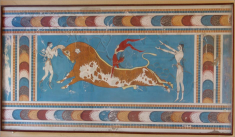Speaker
Description
Ultra-peripheral collisions of heavy ions give physicists an opportunity for studies of two-photon induced processes in a clean environment with strongly suppressed hadronic interactions. In particular, measurements of cross section of the process $\mathrm{Pb}+\mathrm{Pb} \rightarrow \mathrm{Pb}+\mathrm{Pb} + \tau^{+}\tau^{-}$ can be used to set new constraints on poorly known anomalous magnetic moment of $\tau$-lepton. Obtaining a precise experimental value for tau $g-2$ becomes especially important in view of new data from the Muon $g-2$ experiment and also for verification of Standard Model extensions, including supersymmetry and theories with composite leptons. In recent results from ATLAS and CMS experiments, tau $g-2$ precision is limited by significant systematic uncertainties and insufficient size of data sample due to trigger constraints. With the ALICE experiment in Run 3 it will be possible to address lower transverse momenta for reconstructed charged particles to increase the number of available events. In this work, realistic simulations of the ALICE detector were carried out for event selection strategy developments for central and forward rapidity regions. In this contribution, the results of these studies will be presented. The impact of experimental and theoretical uncertainties on the extraction of tau $g-2$ limits will be discussed.
Details
Nazar Burmasov; Petersburg Nuclear Physics Institute, Gatchina, Russia; website: http://www.pnpi.spb.ru/en/
| Is this abstract from experiment? | Yes |
|---|---|
| Name of experiment and experimental site | ALICE |
| Is the speaker for that presentation defined? | Yes |
| Internet talk | Yes |
